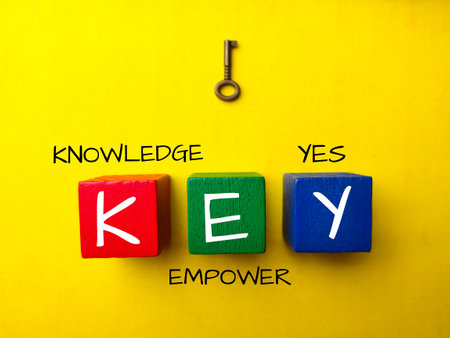Understanding Local Search Behaviour in India
India’s digital landscape is incredibly diverse, with users coming from different regions, cultures, and backgrounds. For SEO professionals aiming to thrive by 2025, understanding how Indians search online is crucial. Unlike Western countries where English dominates, a large portion of Bharat’s population prefers searching in regional languages such as Hindi, Tamil, Telugu, Bengali, and Marathi. This multilingual environment means keyword research must go beyond English and include local scripts and colloquial phrases.
Exploring Regional Language Usage
The rise of affordable smartphones and cheap data plans has empowered millions in tier-2 and tier-3 cities to access the internet in their native language. Tools like Google’s Multilingual Search and voice assistants are becoming popular among Indian users who are more comfortable speaking than typing. It is essential for Indian SEO pros to identify trending queries in various regional languages and optimize content accordingly. This ensures higher visibility on SERPs for targeted audiences across states.
Unique Mobile Search Habits
India is a mobile-first nation. Over 70% of internet traffic comes from mobile devices. Most Indians use voice search or mix English with local terms—often called “Hinglish” or similar blends (like “Tanglish”). For example, someone might search “best chaat near me” or “latest saree designs online.” Understanding these hybrid queries can help SEO experts create content that resonates with real-life search habits.
Aligning SEO Strategies with Bharat’s Digital Diversity
The diversity of India demands hyper-localized SEO strategies. Using structured data to highlight local business information, optimizing for Google My Business (now Google Business Profile), and leveraging location-based keywords can improve your website’s visibility among nearby users. Always analyze user behaviour using tools like Google Analytics and Search Console to adapt your strategy for different states, languages, and user segments.
Mastering Multilingual SEO for Indian Languages
India’s digital landscape is as diverse as its people, with over 20 official languages and hundreds of dialects spoken across the country. For Indian SEO professionals aiming to thrive in 2025, mastering Multilingual SEO is non-negotiable. Optimising content for Hindi, Tamil, Telugu, Bengali, and other regional tongues ensures that your website resonates with audiences from every corner of Bharat.
Why Multilingual SEO Matters in India
Over 50% of India’s internet users prefer browsing in their native language rather than English. This trend is only growing as more users from Tier 2 and Tier 3 cities come online. To connect with this massive audience, you must adapt your SEO strategy to cater to regional preferences and search behaviour.
Key Techniques for Regional Language Optimisation
- Keyword Research in Local Languages: Use tools like Google Keyword Planner and SEMrush to find high-volume keywords in Hindi, Tamil, Telugu, Bengali, and others. Don’t just translate—localise!
- Create Unique Content: Develop original content for each language rather than direct translation. Address local culture, trends, and user intent.
- On-Page SEO: Optimise meta titles, descriptions, headers, and alt text using relevant keywords for each language.
- Hreflang Tags: Implement hreflang attributes correctly so Google knows which version of your page to show users based on their language preferences.
- User Experience: Ensure fonts are readable and the site layout supports multiple scripts (like Devanagari or Tamil).
Popular Indian Languages & SEO Considerations
| Language | Main States/Regions | SEO Tip |
|---|---|---|
| Hindi | Northern states (UP, MP, Delhi) | Use colloquial phrases common in daily speech |
| Tamil | Tamil Nadu, Pondicherry | Optimise for mobile-first searches; use Unicode encoding |
| Bengali | West Bengal, Tripura | Create culturally relevant blog topics and FAQs |
| Telugu | Andhra Pradesh, Telangana | Add video content with Telugu subtitles or transcripts |
| Marathi | Maharashtra | Cater to local festivals and events in your content calendar |
Action Steps for Indian SEO Pros
- Diversify your team or collaborate with native speakers for authentic translations.
- A/B test multilingual landing pages to see what resonates most with each region’s audience.
- Monitor analytics by language segment to refine your strategy continuously.
The future of Indian SEO is multilingual. By adopting these strategies today, you’ll ensure your website reaches—and connects—with India’s vast linguistic spectrum tomorrow.

3. Mobile-First Optimisation for Desi Audiences
With India leading the world in mobile internet usage, every Indian SEO pro must become a master of mobile-first optimisation by 2025. Today, the majority of desi users access websites through their smartphones rather than desktops or laptops. To truly connect with this audience, your website must offer a lightning-fast, seamless experience on any device.
Why Mobile Matters in India
India’s digital landscape is unique. From big metros to small towns, cheap data plans and affordable smartphones have put the internet in everyone’s pocket. If your site isn’t optimised for mobile, you risk losing out on Bharat’s growing online population.
Key Mobile SEO Skills to Focus On
- Speed is King: Ensure your site loads quickly even on slower 4G or patchy networks common across Indian regions. Use compressed images and minified code to boost speed.
- Responsive Design: Make sure your site looks perfect on all screen sizes—from budget Androids to high-end iPhones. A responsive layout keeps users engaged and reduces bounce rates.
- Leverage Google AMP: Accelerated Mobile Pages (AMP) can help your site load instantly for users searching via Google—especially important during cricket season or festival sales when traffic spikes.
- Voice Search Optimisation: Many Indian users search using voice in Hinglish or regional languages. Optimise for natural language queries and long-tail keywords like “best pani puri near me” or “cheapest saree shop Hyderabad.”
Cultural Touch: Localisation is Key
Desi audiences love seeing content that feels local. Use location-based keywords, and offer language options where possible—think Hindi, Tamil, Bengali, or Telugu—to make every user feel at home.
Mastering these mobile SEO skills ensures you stay ahead of the curve and keep your digital presence strong in India’s fast-evolving market.
4. Leveraging Indian Social Media & Influencer Signals
In the evolving Indian digital landscape, mastering SEO is no longer limited to Google search algorithms. As 2025 approaches, desi social platforms and local influencers are rewriting the rules for online visibility. Let’s break down how ShareChat, WhatsApp, and influential Indian personalities impact SEO rankings and why every Indian SEO pro needs to be tuned into these signals.
ShareChat & WhatsApp: The Local Pulse of Search
Unlike Western markets dominated by Facebook or Twitter, India’s heart beats on platforms like ShareChat (regional language content) and WhatsApp (private group sharing). These networks drive massive traffic, especially from Tier 2 and Tier 3 cities, where users consume and share content in Hindi, Tamil, Telugu, and other regional languages.
| Platform | SEO Impact | Key Strategies |
|---|---|---|
| ShareChat | Boosts regional backlinks and social shares; increases brand mentions in vernacular languages. | Create viral, shareable content in local languages; leverage trending hashtags. |
| Drives direct traffic via link sharing; helps build micro-communities with high engagement. | Distribute blog links in groups; use broadcast lists for new updates/promotions. |
The Power of Indian Influencers: More Than Just Followers
The rise of regional influencers—be it a popular food vlogger from Chennai or a fashion guru from Mumbai—has transformed how audiences discover brands and information. Google’s E-E-A-T (Experience, Expertise, Authoritativeness, Trustworthiness) framework now factors in influencer credibility and audience trust as ranking signals.
- Niche Authority: Collaborating with influencers amplifies your brand’s authority in specific sectors like edtech, beauty, or fintech.
- User Engagement: Influencers can drive spikes in branded search queries and site visits through authentic recommendations.
- Cultural Relevance: Regionally relevant endorsements boost site relevance for local SERPs (Search Engine Result Pages).
Influencer Impact on Regional SEO (Example Table)
| Influencer Type | Main Platform | SEO Benefit |
|---|---|---|
| Tamil Tech Reviewer | YouTube / ShareChat | Backlinks from video descriptions and ShareChat posts; surge in local keyword searches. |
| Mumbai Fashion Blogger | Instagram / WhatsApp Groups | User-generated content; increased branded searches; high dwell time from referred audiences. |
| Bengali Food Vlogger | YouTube / WhatsApp Broadcasts | Diversified backlinks; enhanced site authority for Bengali keywords. |
Action Steps for Indian SEO Pros:
- Tie up with micro-influencers who resonate with your target region or language.
- Create campaigns optimized for ShareChat trends and WhatsApp virality.
- Monitor referral traffic from these channels using UTM parameters and Google Analytics to refine your strategy.
This holistic approach to leveraging India-centric social media and influencer signals will help you dominate regional rankings—and stay ahead in the ever-competitive 2025 SEO game.
5. Local Link Building & Bharat-Specific Directories
Unlocking the Power of Indian Backlinks
One of the most crucial skills for any Indian SEO professional by 2025 is mastering local link building strategies with a focus on Bharat-centric platforms. Earning high-quality backlinks from well-known Indian websites not only boosts your site authority but also resonates strongly with desi audiences and search engines alike.
Why Indian Backlinks Matter
Unlike generic global links, backlinks from respected Indian portals, news sites like Times of India or NDTV, and popular blogs increase trust among both users and Google India. Such connections show that your business is relevant in the local landscape, especially when targeting Hindi, Tamil, Telugu, Bengali, or other regional language audiences.
Proven Methods to Earn High-Quality Desi Backlinks
- Guest Posting: Write insightful articles for leading Indian blogs in your industry. Connect with content managers on LinkedIn or via email using friendly, personalized pitches.
- Local PR Campaigns: Announce new launches or CSR activities to regional online newspapers and digital magazines for potential coverage and backlinks.
- Community Participation: Join Indian forums such as Quora India, Reddit India, or niche-specific communities like TechGig or Pagalguy. Share expertise and gently promote your website where relevant.
Bharat-Specific Directories: Your Secret Weapon
Listing your business on authoritative Bharat-driven directories can drive targeted traffic and improve your local SEO game. Platforms such as Justdial, Sulekha, Indiamart, YellowPages.in, and regional city directories are must-haves for every Indian business. Always ensure NAP (Name, Address, Phone) consistency across all listings.
Best Practices for Directory Submissions
- Select only reputed and regularly updated directories—avoid spammy ones.
- Add detailed descriptions in both English and regional languages if possible.
- Include accurate business categories and use local keywords (e.g., “best dosa shop in Chennai” instead of just “South Indian restaurant”).
Combine Local Link Building With Content Marketing
Create locally-relevant resources like city guides, festival calendars, or “top 10” lists that naturally attract links from community blogs and influencers. Collaborate with micro-influencers on Instagram Reels or YouTube Shorts who speak vernacular languages to earn organic mentions and links.
The Desi SEO Pro Mindset
A successful Indian SEO expert knows that blending technical know-how with cultural understanding is key. Embrace Bharat-specific platforms for link building and leverage local relationships to make your SEO strategy truly unstoppable by 2025!
6. Structuring Data for Local Rich Snippets
Why Structured Data Matters for Indian SEO
Structured data, or schema markup, is the backbone of rich snippets in Google search results. For Indian businesses—whether you run a restaurant in Mumbai, an e-commerce store in Delhi, or a tuition centre in Bangalore—leveraging structured data can significantly boost your click-through rates (CTR) and visibility on SERPs. By 2025, every Indian SEO pro must master how to implement and customise schema specifically for local needs.
Understanding Schema Markup for Indian Businesses
Schema is a type of microdata that helps search engines understand your website content better. When you use schema correctly, Google may reward your site with eye-catching rich snippets: star ratings, price ranges, “book now” buttons, address info, and more. These details are especially important for Indian users who often compare options before making decisions.
Practical Examples by Industry
Restaurants & Cafés
For Indian eateries, adding <Restaurant> schema can display menu highlights, opening hours (including special timings for festivals like Diwali or Eid), location maps with “Get Directions,” and customer ratings in search results. This makes it easier for hungry locals or tourists to choose your spot over others.
E-Commerce Stores
Indian online retailers should use <Product> and <Offer> schemas to showcase prices in INR (₹), availability status (in stock/out of stock), discount badges during sales seasons (like Big Billion Days or Great Indian Festival), and user reviews. These elements can build trust and encourage more clicks from value-conscious shoppers.
Local Services
If you offer home repairs, coaching classes, or beauty services in India, the <LocalBusiness> schema lets you highlight your service area (city/locality), contact number (with WhatsApp integration), business hours (including regional holidays), and even booking links. This transparency builds credibility among Indian customers who prefer local service providers they can reach easily.
Key Tips for Indian Context
- Always set your country (“IN”) and city names clearly in your schema.
- Mention local languages offered (Hindi, Tamil, Bengali, etc.) where relevant.
- Add payment methods popular in India (UPI, Paytm, Cash on Delivery).
Mastering structured data tailored for India will help your site stand out amidst tough competition on Google and other search engines. By 2025, this skill will be non-negotiable for SEO success across all major sectors in India.
7. Staying Updated with Indian SEO Trends & Compliance
To remain a top SEO professional in India, it’s essential to stay ahead by keeping up with the latest updates on Indian digital regulations, e-commerce laws, and emerging search features introduced by Google India. The digital landscape in India is evolving rapidly, with increasing emphasis on privacy, data protection, and localisation requirements.
Why Is Staying Updated Important?
Indian SEO is not just about keywords and backlinks. Regulatory changes like the Digital Personal Data Protection Act (DPDP) and new e-commerce guidelines can directly affect how websites are ranked, how data is handled, and how content is displayed in search results. Adapting quickly ensures you avoid penalties and keep your clients compliant.
Key Areas to Watch
- Google India Search Features: Stay informed about updates such as local language support, voice search adaptations for Indian dialects, and region-specific SERP enhancements.
- Digital Regulations: Follow announcements from the Ministry of Electronics & IT (MeitY) regarding data privacy and cross-border data flow rules that impact website hosting and user tracking.
- E-Commerce Laws: Be aware of mandates affecting online retailers, marketplace operations, product listing requirements, and transaction security measures unique to India.
Best Practices for Indian SEO Pros
- Subscribe to newsletters from FICCI, IAMAI, and Google India Webmaster Central Blog.
- Attend webinars or workshops on Indian IT compliance and SEO innovations.
- Regularly review site privacy policies and ensure adherence to data localisation norms for users in India.
By staying proactive with these updates and integrating best practices tailored to the Indian context, you’ll continue to deliver results while ensuring all your digital properties remain compliant and competitive in the ever-changing Indian market.

